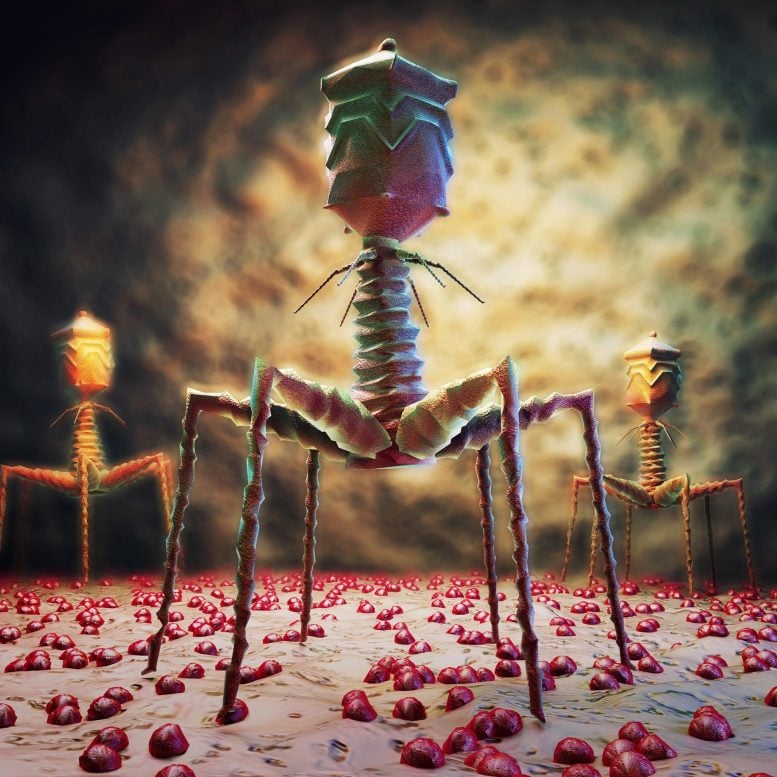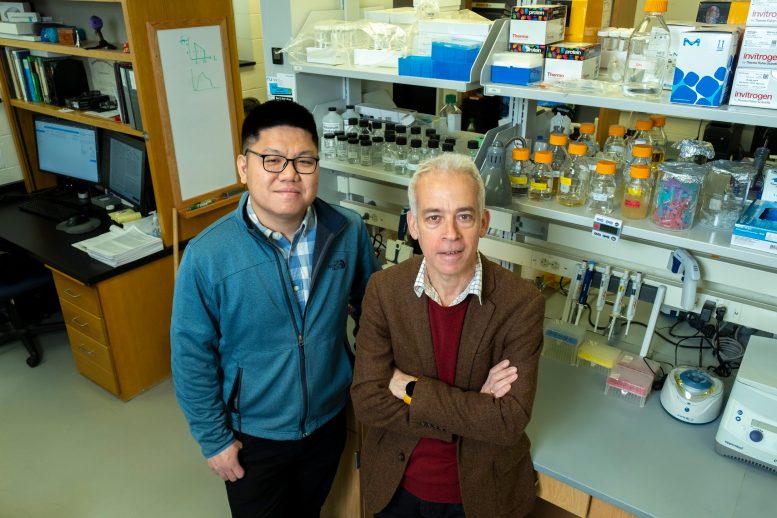
Recent research on phages—bacteria-infecting viruses—reveals that the number and interactions of phages during infection impact their entry into host cells, influenced by the cell’s electrophysiology. This discovery opens new avenues for understanding phage behavior and its implications for biotechnology.
Researchers have studied the process by which phages—viruses that infect and replicate within bacteria—enter cells for over 50 years. In a new study, scientists from the University of Illinois Urbana-Champaign and Texas A&M University have employed cutting-edge techniques to examine this process at the single-cell level.
“The field of phage biology has seen an explosion over the last decade because more researchers are realizing the significance of phages in ecology, evolution, and biotechnology,” said Ido Golding (CAIM/IGOH), a professor of physics. “This work is unique because we looked at phage infection at the level of individual bacterial cells.”
Understanding Phage Infection
The process of phage infection involves the attachment of the virus to the surface of a bacterium. Following this, the virus injects its genetic material into the cell. After entering, a phage can either force the cell to produce more phages and eventually explode, a process called cell lysis, or the phage can integrate its genome into the bacterial one and remain dormant, a process called lysogeny. The outcome depends on how many phages are simultaneously infecting the cell. A single phage causes lysis, while infection by multiple phages results in lysogeny.

In the current study, the researchers wanted to ask whether the number of infecting phages that bind to the bacterial surface corresponds to the amount of viral genetic material that is injected into the cell. To do so, they fluorescently labeled both the protein shell of the phages and the genetic material inside. They then grew Escherichia coli, used different concentrations of infecting phages, and tracked how many of them were able to inject their genetic material into E. coli.
“We have known since the 70s that when multiple phages infect the same cell, it impacts the outcome of the infection. In this paper, we were able to take precise measurements unlike any study done so far,” Golding said.
Challenges in Phage Entry
The researchers were surprised to find that the entry of a phage’s genetic material could be impeded by the other coinfecting phages. They found that when there were more phages attached to the surface of the cell, relatively fewer of them were able to enter.
“Our data shows that the first stage of infection, phage entry, is an important step that was previously underappreciated,” Golding said. “We found that the coinfecting phages were impeding each other’s entry by perturbing the electrophysiology of the cell.”
The outermost layer of bacteria is constantly dealing with the movement of electrons and ions that are crucial for energy generation and transmitting signals in and out of the cell. Over the past decade, researchers have started realizing the importance of this electrophysiology in other bacterial phenomena, including antibiotic resistance. This paper opens a new avenue for research in bacterial electrophysiology—its role in phage biology.
“By influencing how many phages actually enter, these perturbations affect the choice between lysis and lysogeny. Our study also shows that entry can be impacted by environmental conditions such as the concentration of various ions,” Golding said.
The team is interested in improving their techniques to better understand the molecular underpinnings of phage entry.
“Even though the resolution of our techniques was good, what was happening at the molecular level was still largely invisible to us,” Golding said. “We are looking at using the Minflux system at the Carl R. Woese Institute for Genomic Biology. The plan is to examine the same process but apply a better experimental method. We’re hoping that this will help us find new biology.”
Reference: “Coinfecting phages impede each other’s entry into the cell” by Thu Vu Phuc Nguyen, Yuchen Wu, Tianyou Yao, Jimmy T. Trinh, Lanying Zeng, Yann R. Chemla and Ido Golding, 14 June 2024, Current Biology.
DOI: 10.1016/j.cub.2024.05.032
The work was supported by the National Institutes of Health, the National Science Foundation, and the Alfred P. Sloan Foundation.